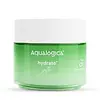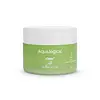What's inside
What's inside
 Key Ingredients
Key Ingredients

 Benefits
Benefits

 Concerns
Concerns

 Ingredients Side-by-side
Ingredients Side-by-side

Water
Skin ConditioningButylene Glycol
HumectantHydroxyethyl Urea
HumectantHydrogenated Polyisobutene
EmollientSilica
AbrasiveAmmonium Polyacryloyldimethyl Taurate
Emulsion StabilisingN-Vinyl Pyrrolidone
Glycerin
HumectantSaccharide Isomerate
HumectantCitric Acid
BufferingSodium Citrate
BufferingCocos Nucifera Water
MaskingCetearyl Olivate
Sorbitan Olivate
EmulsifyingGlyceryl Glucoside
HumectantAloe Barbadensis Leaf Juice
Skin ConditioningPhenoxyethanol
PreservativeAvena Strigosa Seed Extract
Skin ConditioningLecithin
EmollientPotassium Sorbate
PreservativeAphanothece Sacrum Polysaccharide
AbsorbentSodium Hyaluronate
HumectantDisodium EDTA
Sodium Acrylates Copolymer
Parfum
MaskingCI 42053
Cosmetic ColorantCI 19140
Cosmetic ColorantCI 42090
Cosmetic ColorantWater, Butylene Glycol, Hydroxyethyl Urea, Hydrogenated Polyisobutene, Silica, Ammonium Polyacryloyldimethyl Taurate, N-Vinyl Pyrrolidone, Glycerin, Saccharide Isomerate, Citric Acid, Sodium Citrate, Cocos Nucifera Water, Cetearyl Olivate, Sorbitan Olivate, Glyceryl Glucoside, Aloe Barbadensis Leaf Juice, Phenoxyethanol, Avena Strigosa Seed Extract, Lecithin, Potassium Sorbate, Aphanothece Sacrum Polysaccharide, Sodium Hyaluronate, Disodium EDTA, Sodium Acrylates Copolymer, Parfum, CI 42053, CI 19140, CI 42090
Water
Skin ConditioningGlycereth-26
HumectantPropanediol
SolventSalicylic Acid
MaskingDextrin
AbsorbentPolydextrose
HumectantAmylopectin
Niacinamide
SmoothingCarbomer
Emulsion StabilisingCamellia Sinensis Leaf Extract
AntimicrobialAzadirachta Indica Leaf Extract
Skin ConditioningBetaine
HumectantSodium Hydroxide
BufferingPhenoxyethanol
PreservativeEthylhexylglycerin
Skin ConditioningGlycerin
HumectantGlyceryl Glucoside
HumectantSodium Gluconate
Skin ConditioningAllantoin
Skin ConditioningSodium Hyaluronate
HumectantWater, Glycereth-26, Propanediol, Salicylic Acid, Dextrin, Polydextrose, Amylopectin, Niacinamide, Carbomer, Camellia Sinensis Leaf Extract, Azadirachta Indica Leaf Extract, Betaine, Sodium Hydroxide, Phenoxyethanol, Ethylhexylglycerin, Glycerin, Glyceryl Glucoside, Sodium Gluconate, Allantoin, Sodium Hyaluronate
 Reviews
Reviews

Ingredients Explained
These ingredients are found in both products.
Ingredients higher up in an ingredient list are typically present in a larger amount.
Glycerin is already naturally found in your skin. It helps moisturize and protect your skin.
A study from 2016 found glycerin to be more effective as a humectant than AHAs and hyaluronic acid.
As a humectant, it helps the skin stay hydrated by pulling moisture to your skin. The low molecular weight of glycerin allows it to pull moisture into the deeper layers of your skin.
Hydrated skin improves your skin barrier; Your skin barrier helps protect against irritants and bacteria.
Glycerin has also been found to have antimicrobial and antiviral properties. Due to these properties, glycerin is often used in wound and burn treatments.
In cosmetics, glycerin is usually derived from plants such as soybean or palm. However, it can also be sourced from animals, such as tallow or animal fat.
This ingredient is organic, colorless, odorless, and non-toxic.
Glycerin is the name for this ingredient in American English. British English uses Glycerol/Glycerine.
Learn more about GlycerinGlyceryl Glucoside is made from glycerol and glucose.
It is a humectant. Humectants help hydrate your skin by drawing moisture to it from the air.
Some foods that contain glyceryl glucoside include sake, miso, and wines.
Learn more about Glyceryl GlucosidePhenoxyethanol is a preservative that has germicide, antimicrobial, and aromatic properties. Studies show that phenoxyethanol can prevent microbial growth. By itself, it has a scent that is similar to that of a rose.
It's often used in formulations along with Caprylyl Glycol to preserve the shelf life of products.
Sodium Hyaluronate is hyaluronic acid's salt form. It is commonly derived from the sodium salt of hyaluronic acid.
Like hyaluronic acid, it is great at holding water and acts as a humectant. This makes it a great skin hydrating ingredient.
Sodium Hyaluronate is naturally occurring in our bodies and is mostly found in eye fluid and joints.
These are some other common types of Hyaluronic Acid:
Learn more about Sodium HyaluronateWater. It's the most common cosmetic ingredient of all. You'll usually see it at the top of ingredient lists, meaning that it makes up the largest part of the product.
So why is it so popular? Water most often acts as a solvent - this means that it helps dissolve other ingredients into the formulation.
You'll also recognize water as that liquid we all need to stay alive. If you see this, drink a glass of water. Stay hydrated!
Learn more about Water